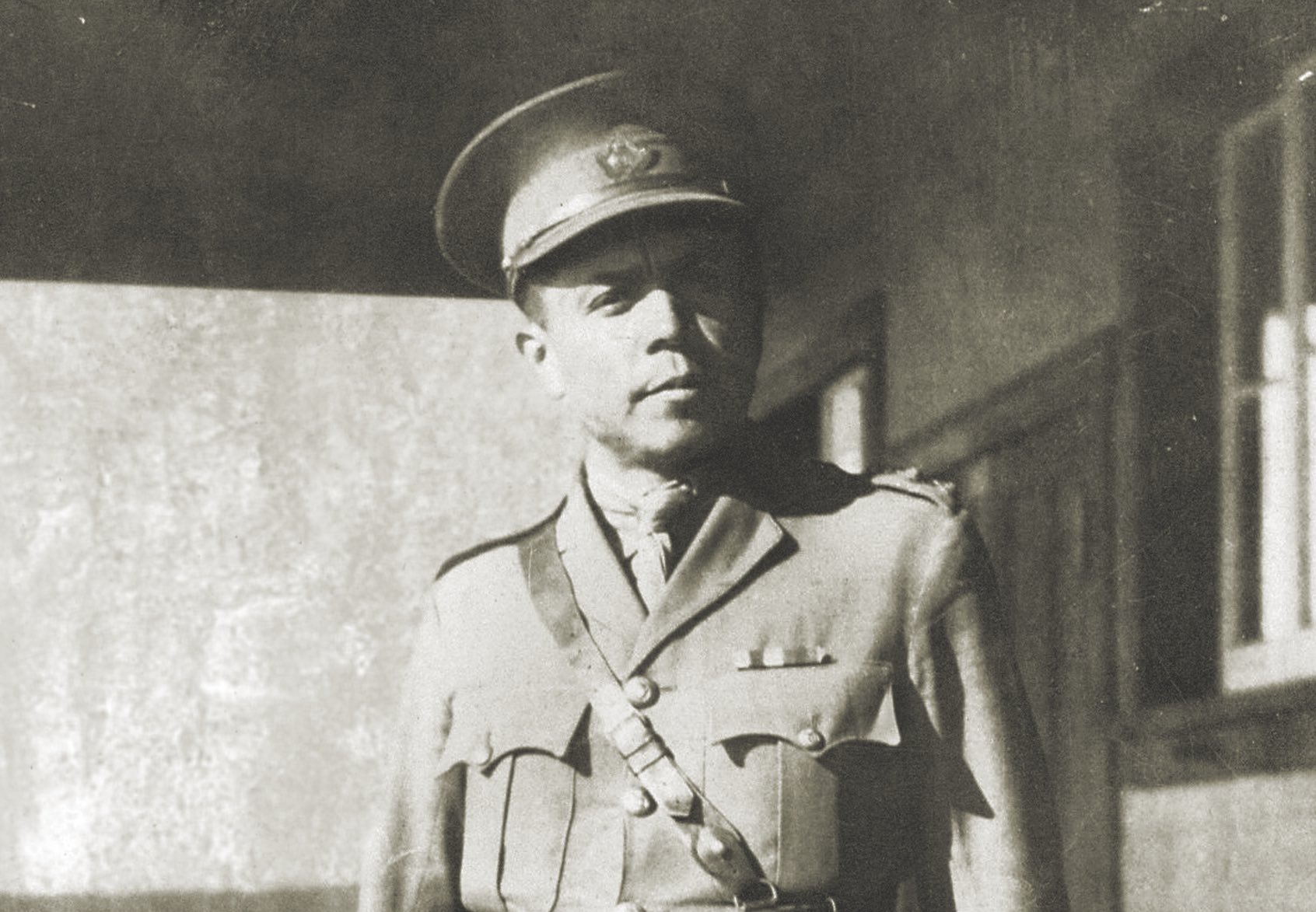Captain Alexander Smith was one of the most highly decorated indigenous Canadians of World War I. While more than 4,000 men of the First Nations served in the Canadian Expeditionary Force (CEF), few were officers. Smith ultimately rose to the rank of captain in the army and later became chief of his Cayuga tribe.
The eldest son of a Six Nations Cayuga chief, Alexander George Edwin Smith was born on Aug. 12, 1879, on the Six Nations of the Grand River reserve in Ontario. As a young man Smith joined the 37th Haldimand Rifles, a militia unit with many indigenous members. By the outset of World War I he’d served in the rifles for 18 years and been promoted to captain. Smith volunteered for the CEF. He was assigned to the 20th (Central Ontario) Battalion, 4th Infantry Brigade, 2nd Canadian Division, as a lieutenant, despite his militia rank and experience. After initial training in Britain, Smith’s unit shipped out to France in September 1915. Two months later Smith was back in Britain for medical treatment after having been deafened during close calls with German artillery shells.
Smith returned to his unit in France in June 1916. On July 1 Anglo-French forces launched the Battle of the Somme, though the divisions of the Canadian Corps didn’t make their combat debut for another 76 days. On September 15 the Canadian 2nd and 3rd divisions, along with nine British divisions, pressed the attack until September 22. Then, following three days of artillery preparation, the Canadians resumed attacking on September 26. The next day Smith led his company in a supporting attack for a main effort by the 8th Battalion (90th Winnipeg Rifles). Advancing in front of his company’s main body with a party of soldiers armed primarily with hand grenades, Smith captured a German trench and 50 prisoners. Twice during the course of the attack he was buried by earth thrown up by shell fire. He was awarded the Military Cross for his actions.
Diagnosed with shell shock, Smith was again evacuated to Britain. In April 1917 he returned to Canada and was assigned to the 1st Depot Battalion at Ontario’s Niagara-on-the-Lake training camp. Among the recruits he trained there for the French army were some 23,000 Polish-born volunteers from both Canada and the United States. France later awarded Smith the Colonial Order of the Black Star (Officer class) for his contribution to the French war effort. He was one of only five Canadians to receive the decoration.
After the war Smith succeeded his father as chief of the Cayuga tribe. His injuries left him with permanent disabilities, including hearing loss and chronic headaches. Despite his war hero status, the veteran officially remained a ward of the state, his $49 a month disability pension doled out by the Canadian Department of Indian Affairs. With the help of his sons and nephews, he tried to run his 100-acre farm, but eventually it proved too much. In 1942 he moved to Buffalo, N.Y., where he died at age 75 on Aug. 21, 1954.
Alexander’s brother, Charles Denton Smith, was also a captain in World War I, with the 18th (Western Ontario) Battalion, in the same brigade as his brother. Charles Smith was also awarded the Military Cross, for heroic actions on Nov. 9, 1918. On that day he led his platoon in an attack against German positions near the Belgian village of Frameries, personally taking out both a demolition party and a machine gun and crew. Another notable member of this remarkable family was Alexander’s son Harold. After his father moved to Buffalo, Harold too moved to the United States. He ended up in Hollywood, where he landed bit parts playing Indians. Changing his screen name to Jay Silverheels, he achieved on-screen immortality as Tonto to Clayton Moore’s Lone Ranger. MH
This article appeared in the March 2022 issue of Military History magazine. For more stories, subscribe and visit us on Facebook.





